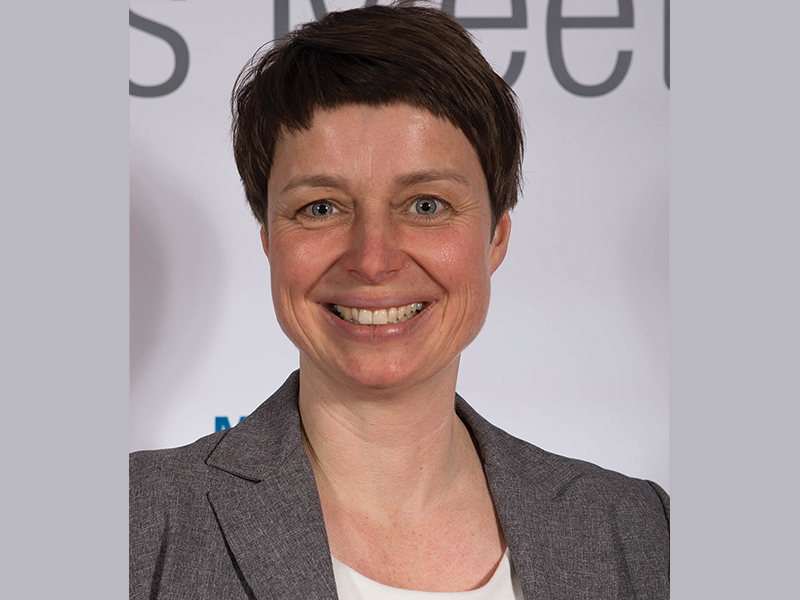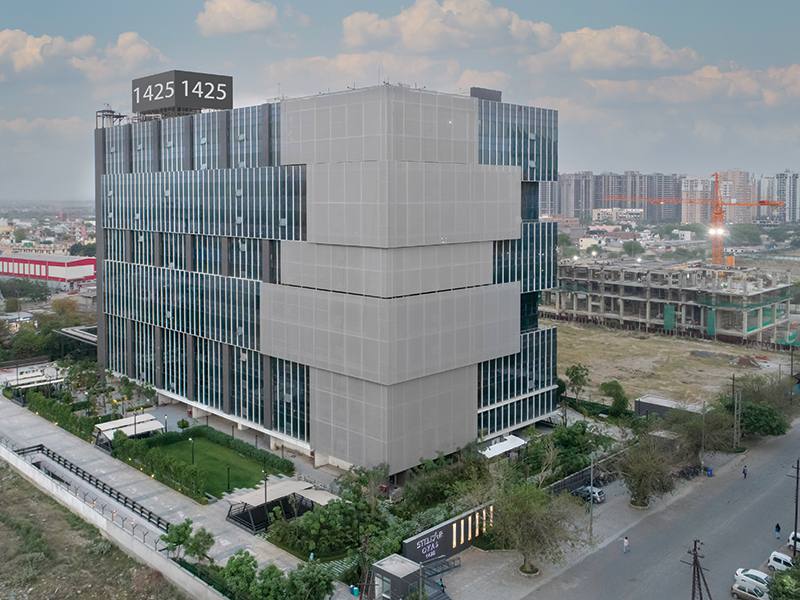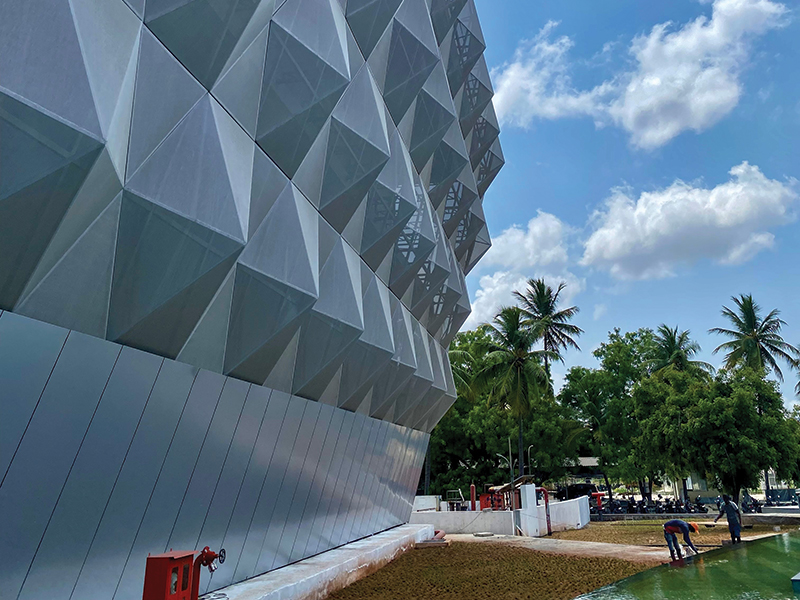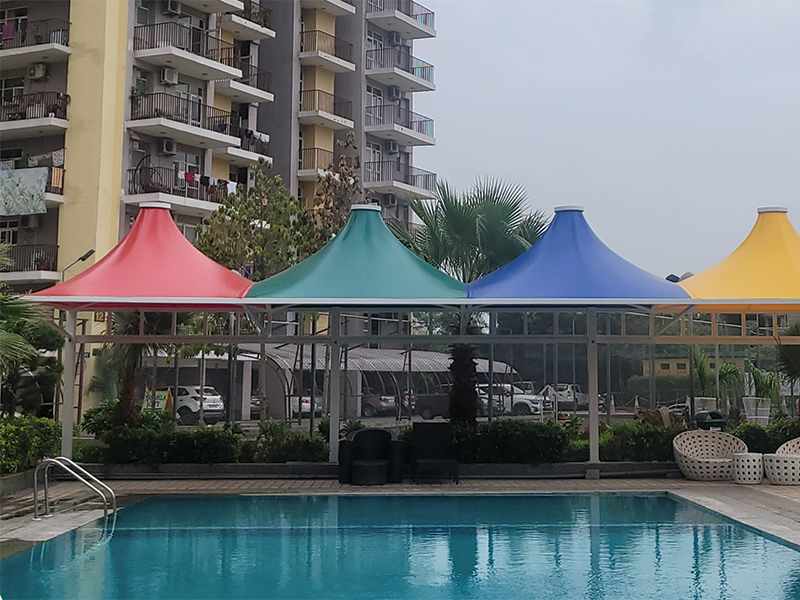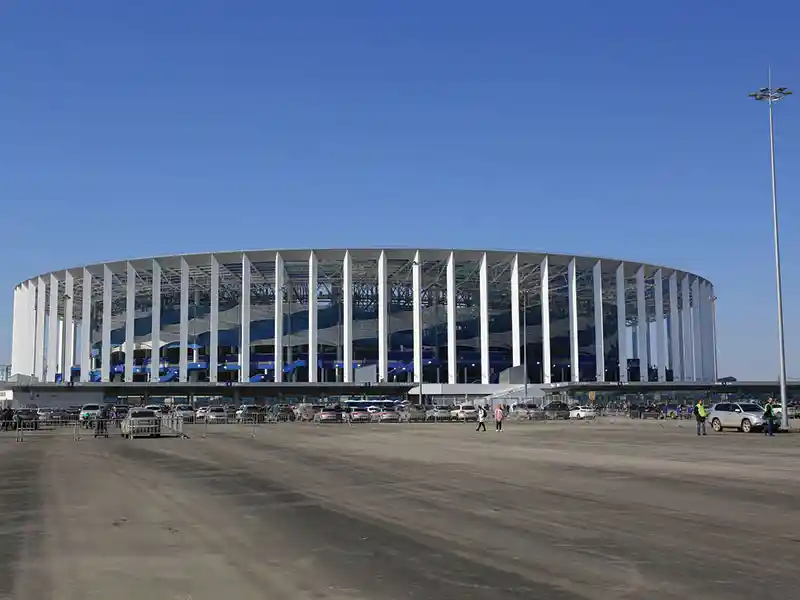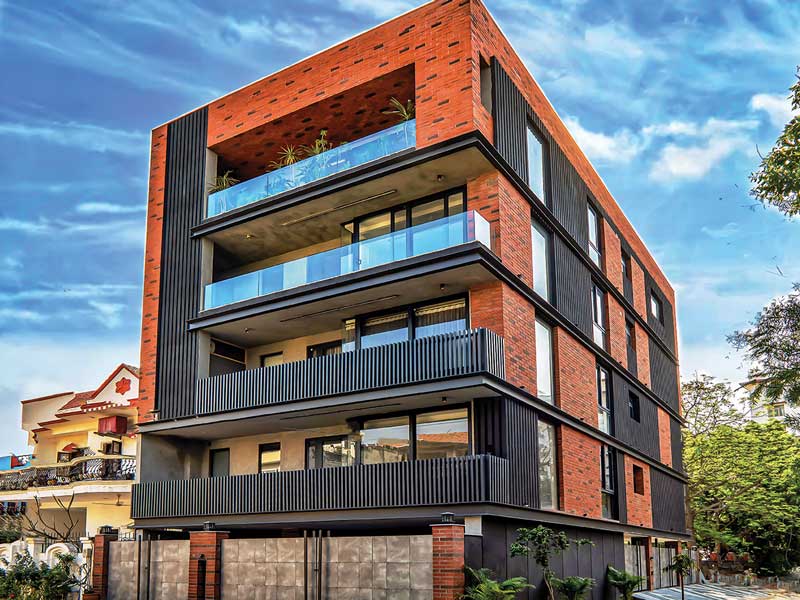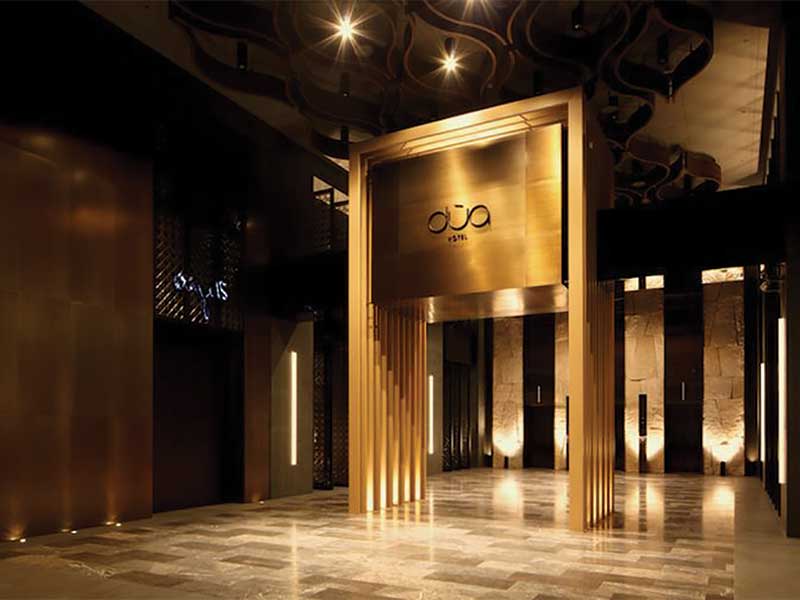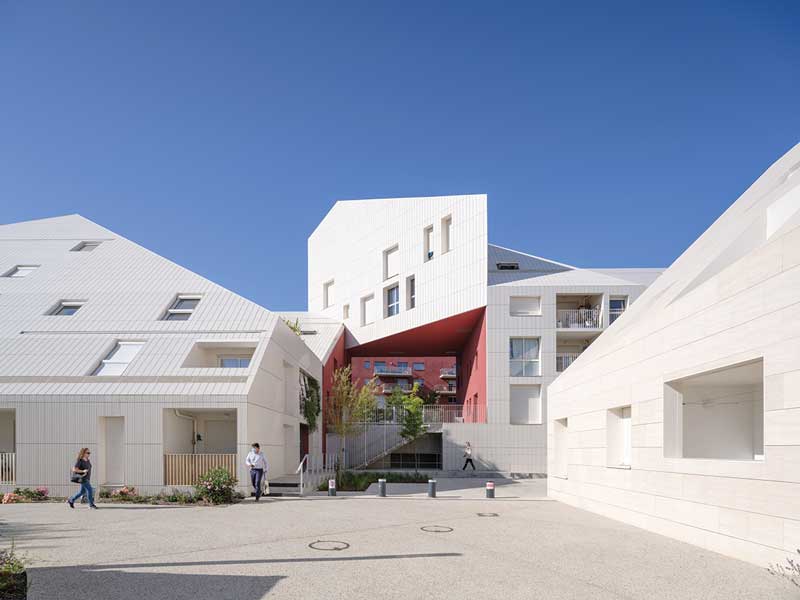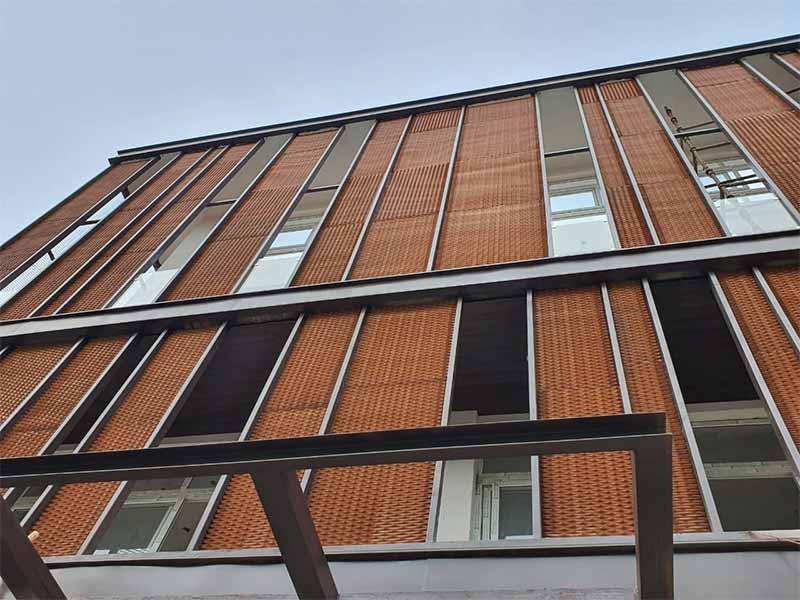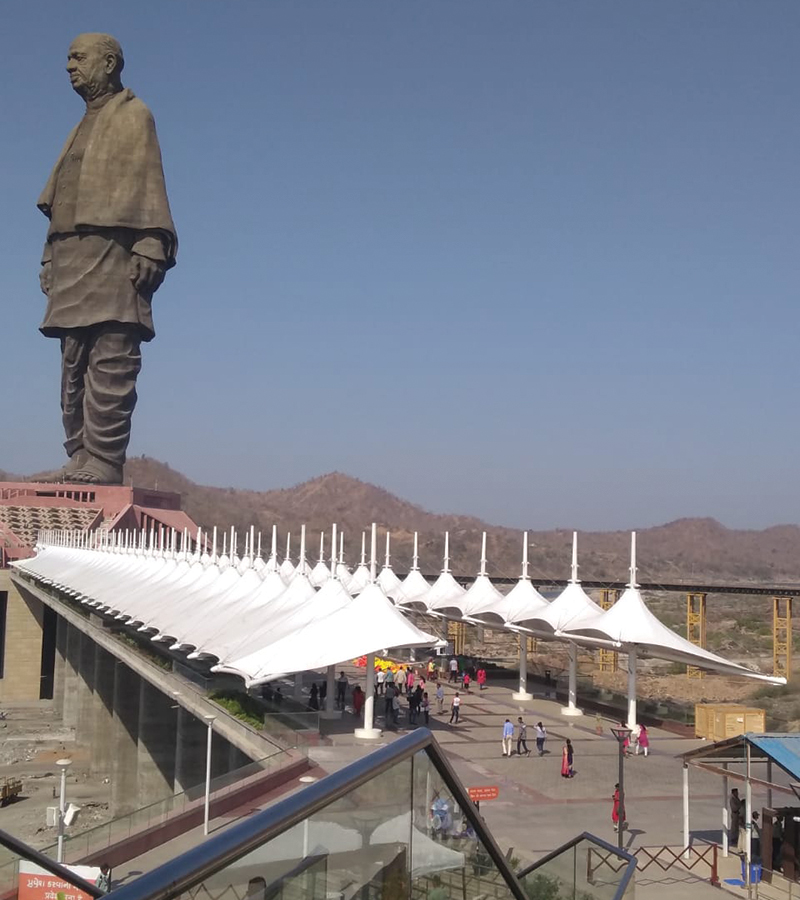 Statue of Unity, Gujarat
Statue of Unity, GujaratUse of tensile roofing has been proven to be highly successful due to their long-lasting performances in airports and in railway stations that were built years ago, and in many other applications.
What’s new for the tensile industry in India (as in many other countries worldwide), is the emerging market of textile façades. There is a huge potential for uplifting existing buildings with a new textile wrap or in choosing fabrics for making the envelope of newly developed buildings. The biggest advantage of textile roofs is their lightweight character. With textiles you can cover vast spaces at the fraction of the load of a metal roof, for example. The same is true for façades as well.
For example, a membrane of Mehler used in roof structures is the VALMEX® Nano HTL Type III; it weighs only around 1 kg/sqm. VALMEX® is Mehler Texnologies’ brand for coated textiles and was registered more than 80 years ago. The Nano lacquer is a high-end coating used in many prominent structures worldwide. By offering a product with an exceptionally easy cleaning property, it has become our clients’ first choice, especially when it comes to structures designed to last for a very long time. HTL is highly translucent with a light transmission between 10 and 20%; this saves on artificial lighting and gives yet another meaning to the term ‘lightness’ which is inherent in textile structures.
There is a huge potential for uplifting existing buildings with a new textile wrap or in choosing fabrics for making the envelope of newly developed buildings.
Katja Bernert, Architect, Mehler Texnologies, Germany
We are also the only company to offer recycled fabrics within the textile architecture range. To give an instance, we used 100% upcycled PET bottles for making the fabric of our façade material TF400 Eco F.
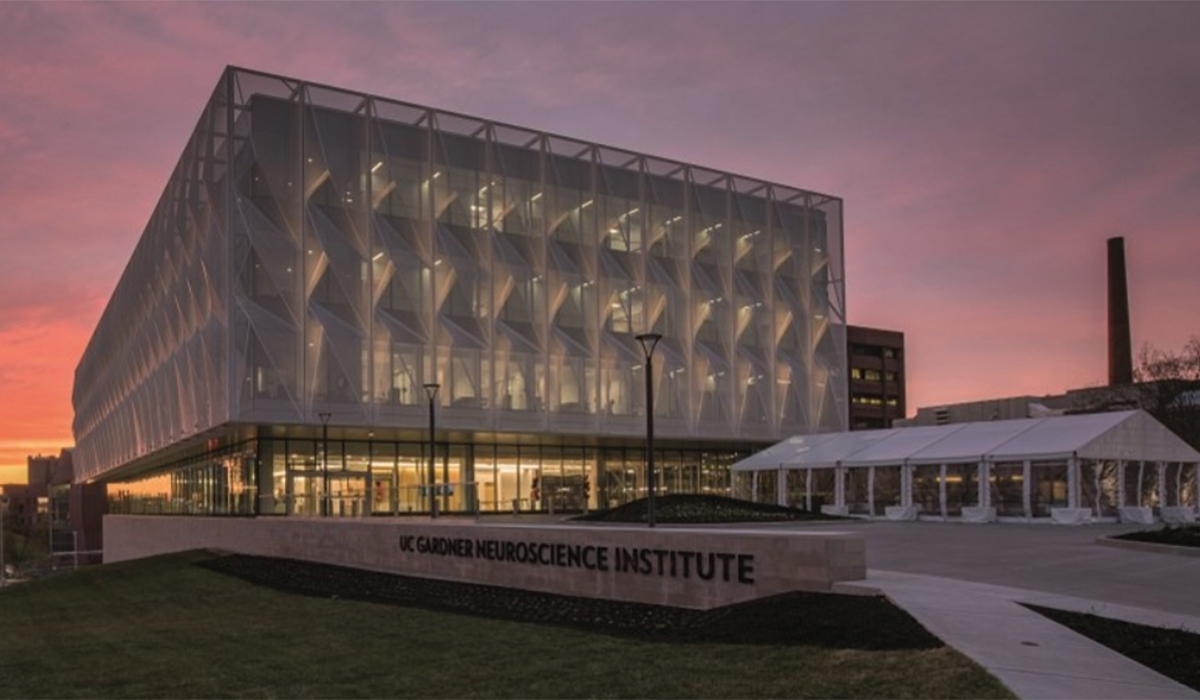 UC Gardner Neuroscience Institute, Cincinnati
UC Gardner Neuroscience Institute, CincinnatiIn textile architecture we face many challenges: if we launch a product for architectural applications, we have to be absolutely sure that it will perform well for a very long period of time. This has proved to be true for the TF400 Eco F façade material. We are not only very confident that it will last a very long time but also that we will soon be able to reach an even higher quota of recycled raw material.
As regards the lifespan and maintenance requirements of tensile roofing, we believe that maintenance and lifespan actually correlate: the better we look after the textile structure, the longer it will last. Our cleaning and maintenance manuals give a clear picture of how best to care for membrane structures. It is obvious that in a polluted area, the intervals for maintenance need to be shorter.
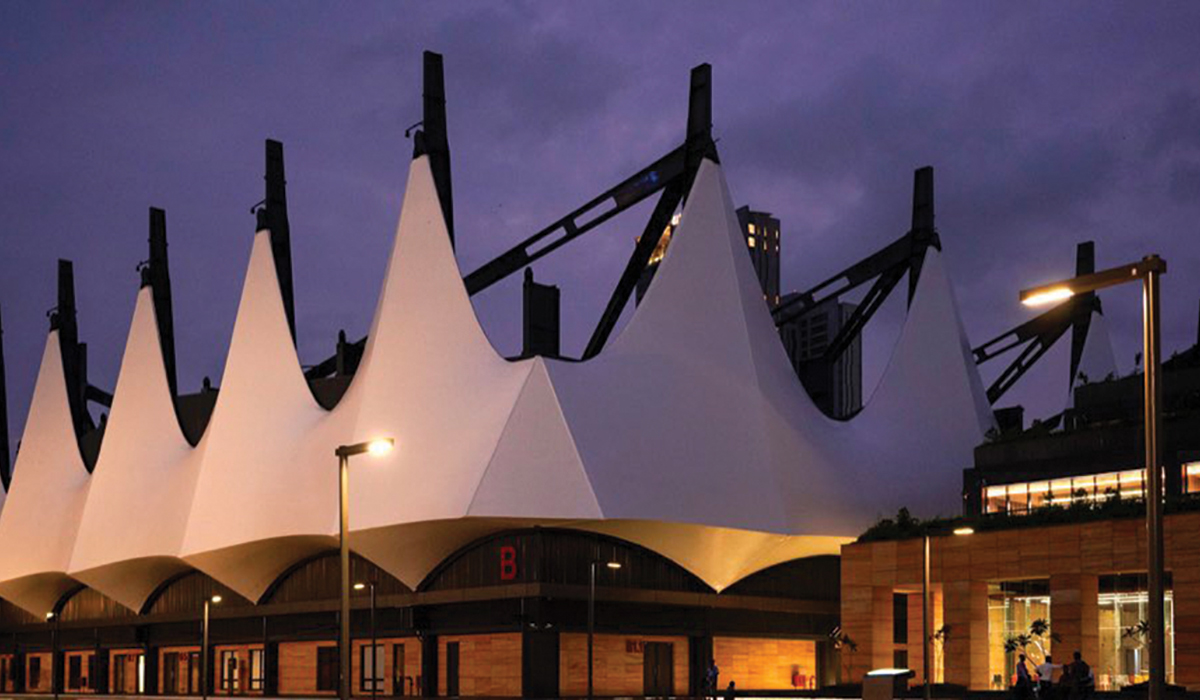 Biswa Bangla Mela Prangan, Kolkata
Biswa Bangla Mela Prangan, KolkataWe have examples in the built environment that last for 30-40 years. A structure in Germany, for example, which was exposed to heavy snow loads over a period of 37 years, was surveyed closely to make sure that it wouldn’t collapse. The structure worked perfectly well; the loss of tensile strength was marginal. The client decided to replace it after 37 years for optical reasons only as he wanted a brand-new colour that fitted his actual needs.
Another of our USPs is the Nano lacquer. With a maximum content of Fluor it is still weldable. Weldability is key to safe and time-efficient manufacturing processes. There are many fabrics on the market that need to be treated before welding, that is to say, the lacquer needs to be grinded off where high frequency welding is necessary. The danger of harming the fabric during these processes is enormously high. Mehler Texnologies’ products for textile architecture application are completely weldable without any prior treatment; this is true even for the high-end Nano lacquer.
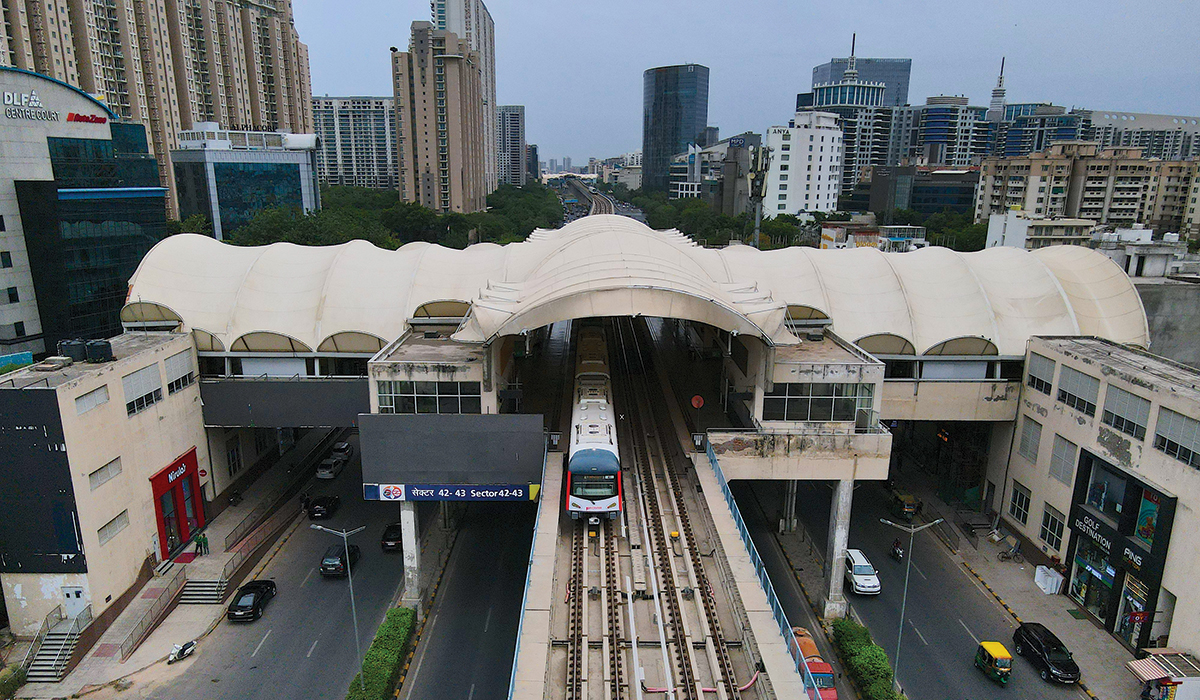 Rapid Metro Station, Gurgaon
Rapid Metro Station, GurgaonOur fabrics for textile architecture applications are produced in Fulda, which is a beautiful town in Germany, close to Frankfurt/Main. The factory was founded by Valentin Mehler in 1837. Together with two more plants: one situated in Hueckelhoven where the head office is also situated, we produce around 45 million sqm of coated fabrics every year but the production capacity is even higher.
Mehler Texnologies is part of the Freudenberg Group – another company with a long textile history situated in Germany and operating worldwide with 50,000 employees. Together with the mother company Mehler Texnologies is re-using most of Europe’s recycled PET bottles and giving them a new life by producing state-of-the-art Polyester fabrics. We are looking forward to bringing this technology to the Indian market.

